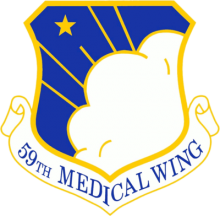Strategies/Treat Non-Compressible Torso Hemorrhage
Introduction/Background: Non-compressible torso and pelvic hemorrhage are the leading cause of potentially survivable deaths. Although, new devices and techniques have been developed to treat these injuries, full integration into field use and clinical practice guidelines remains an ongoing process. The Abdominal Aortic and Junctional tourniquet (AAJT) and Resuscitative Endovascular Balloon Occlusion of the Aorta (REBOA) are two methods designed to treat certain torso and junctional injuries. The AAJT utilizes a wedge-shaped bladder that can be directly applied to the abdomen. REBOA requires placement of a balloon catheter in the femoral artery that is inflated to occlude blood flow to stop hemorrhage. AAJT requires less expertise, is relatively simple to apply, and is designed for field use. Alternatively, REBOA requires proficiency with vascular access techniques and requires specialized equipment. Objective/Hypothesis: This proposal is designed to determine whether conversion of AAJT or zone 3 REBOA to zone 1 REBOA is safe and effective in the setting of hemorrhagic shock. The objectives of this proposal are to: (1) identify potential safety concerns with use of AAJT and REBOA; (2) ways to ameliorate AAJT/REBOA damage; and (3) improve treatment guidelines when using these commercial off-the-shelf (COTS) products for field use. By meeting these objectives, this project will allow for improved detection and treatment of occult torso hemorrhage. Study Design: The studies involved in this effort will all be prospective, randomized, and subject to blind allocation. Each study will be performed sequentially, but each does not depend on the results of the other studies. The first study will determine the feasibility, practicality, and safety of converting the AAJT to REBOA. The second study will determine practicality of changing from AAJT or zone 3 REBOA to zone 1 REBOA. Additionally, this study will provide information on methods for detection of occult hemorrhage. Finally, the third study will test methods for capturing thrombi following REBOA use.

